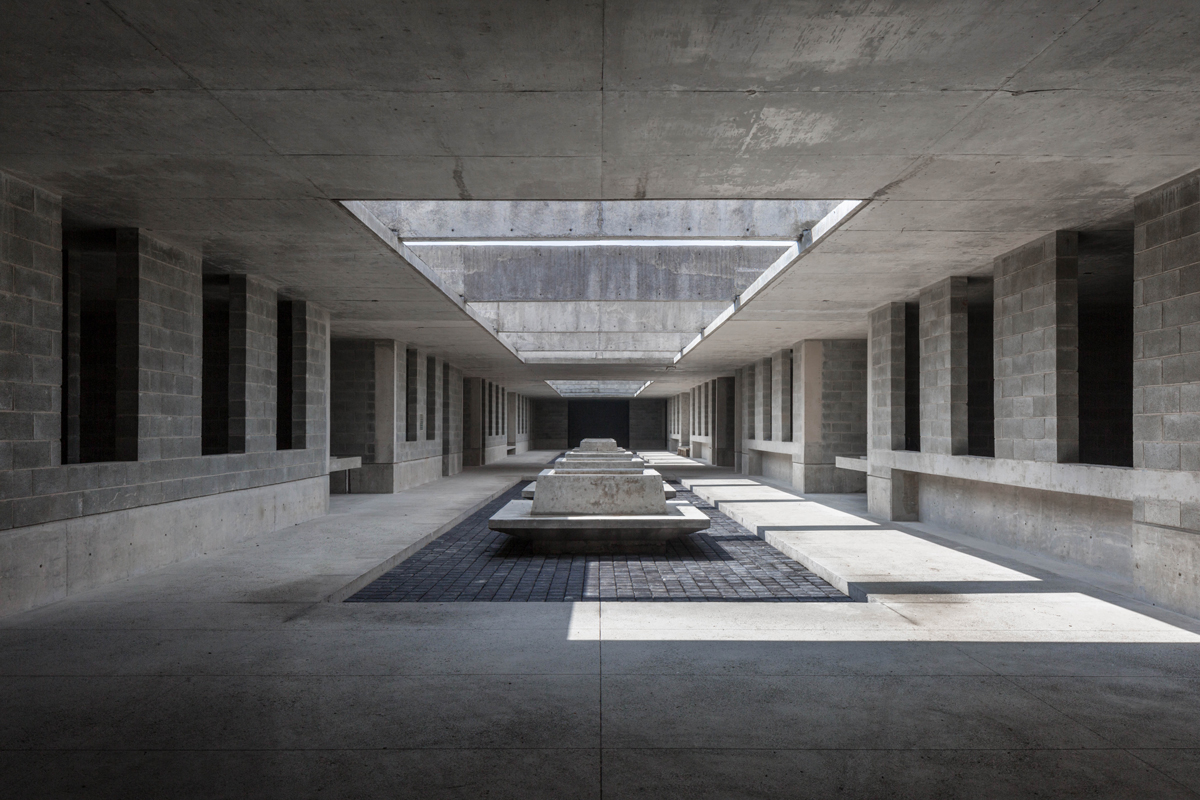Thread. Brutalist architecture in North and South America.
Architect Clorindo Testa won the competition held by the now-extinct Bank of London and South America, for its venue in the financial district of Buenos Aires, between Recoleta and Bartolomé Mitra street.
Architect Clorindo Testa won the competition held by the now-extinct Bank of London and South America, for its venue in the financial district of Buenos Aires, between Recoleta and Bartolomé Mitra street.

Banco de Guatemala
This building was designed by architects José Montes Córdova and Raúl Minondo. Its most great aspects are without a doubt the East and West façades that are decorated with Mayan figures, created by Guatemalan artists Dagoberto Castañeda and Roberto Goyri.
This building was designed by architects José Montes Córdova and Raúl Minondo. Its most great aspects are without a doubt the East and West façades that are decorated with Mayan figures, created by Guatemalan artists Dagoberto Castañeda and Roberto Goyri.
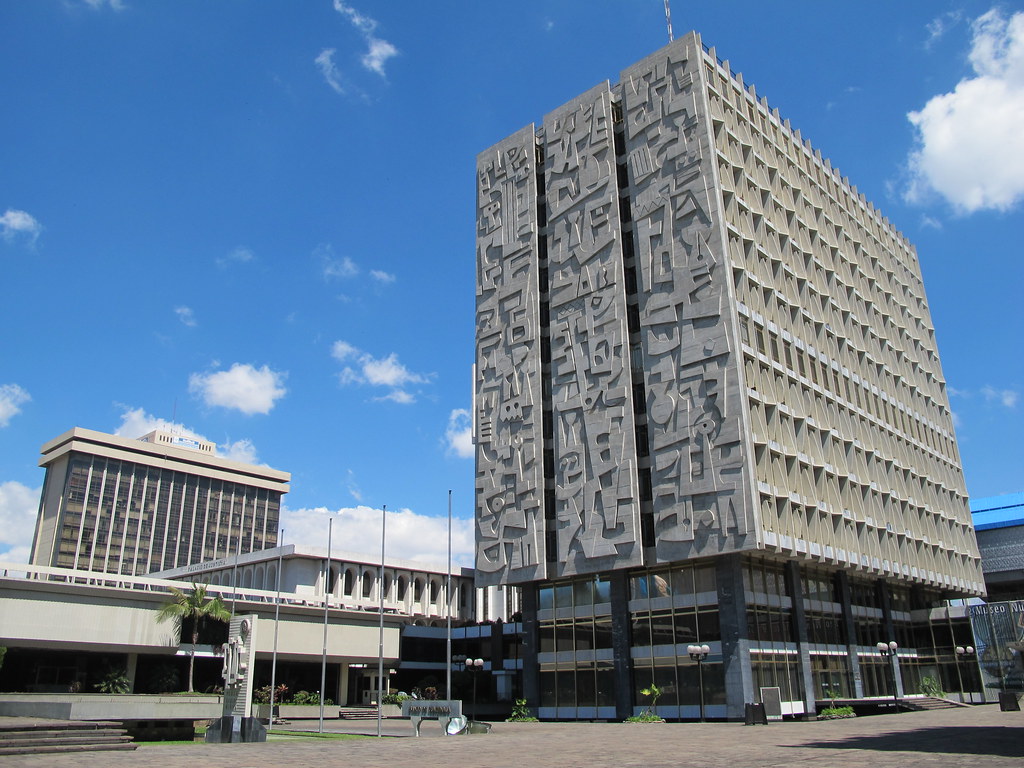
The Tribunal de Contas, located in Sao Paulo, is a huge building designed by the firm Aflalo y Gasperini.
The artistic liberty of the building contrasts with the lack of civic liberties that Brazil was going through at that moment due to the dictatorship.
The artistic liberty of the building contrasts with the lack of civic liberties that Brazil was going through at that moment due to the dictatorship.
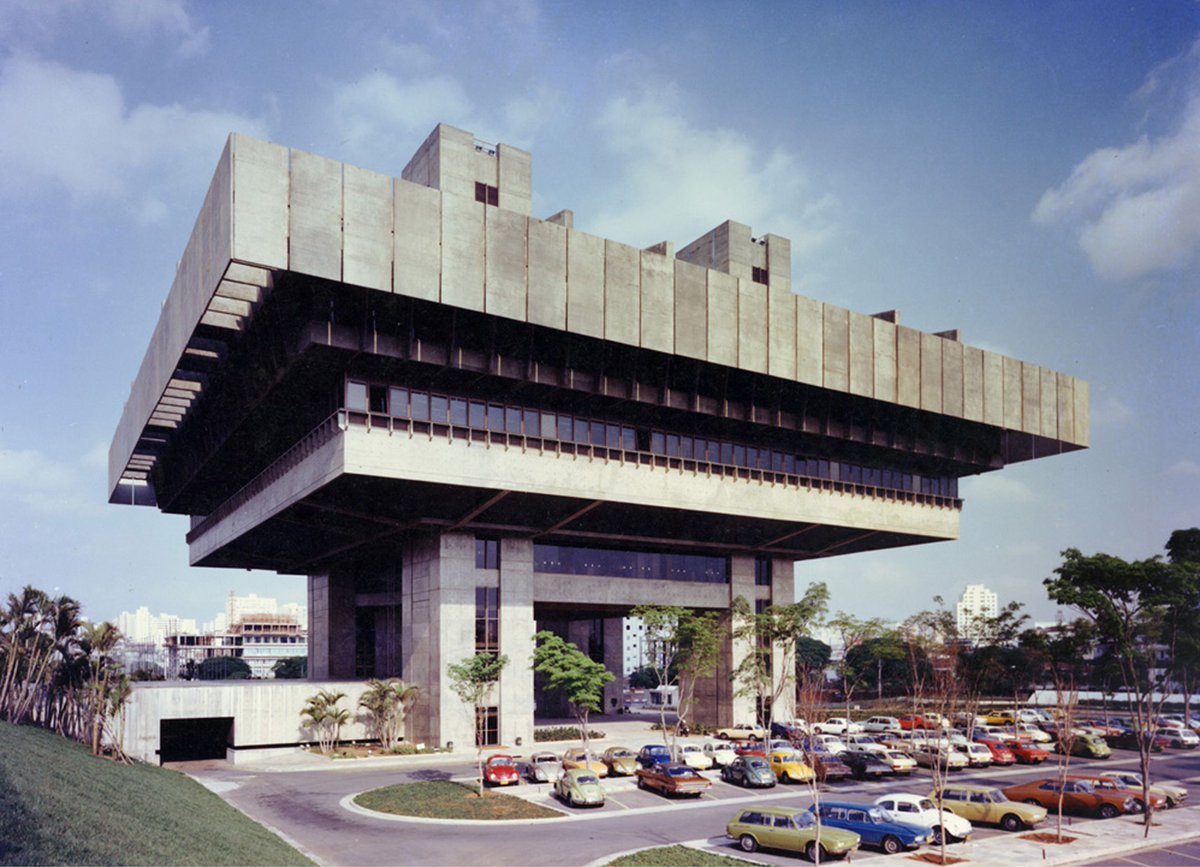
Centro de Exposiciones / Joao Filgueiras Lima
Salvador de Bahía, 1974
This great structure looks similar to a UFO and was built by Filgueiras Lima, a strong Brazilian proponent of the Modernist Movement.
Salvador de Bahía, 1974
This great structure looks similar to a UFO and was built by Filgueiras Lima, a strong Brazilian proponent of the Modernist Movement.
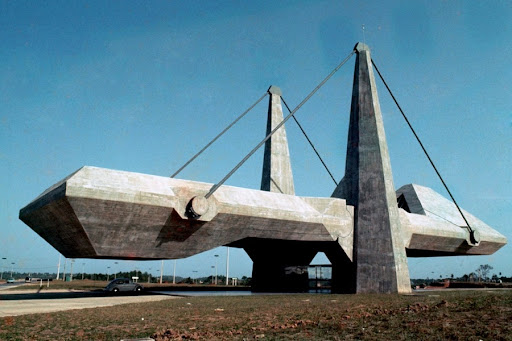
The Jenaro Valverde building designed by Alberto Linner it is 17 stories, and one of the tallest buildings in Costa Rica.
To Linner's dismay, today the space is blocked off, the fountain is not functioning and his idea of public space is dead.
To Linner's dismay, today the space is blocked off, the fountain is not functioning and his idea of public space is dead.

SESC Pompeia, Sao Paolo
Bo Bardi designed two concrete buildings united by bridges that stem from the brick factory building. It is a space that mixes sport, recreation, and culture, a landmark in the city constantly used by the residents of Pompeia.
Bo Bardi designed two concrete buildings united by bridges that stem from the brick factory building. It is a space that mixes sport, recreation, and culture, a landmark in the city constantly used by the residents of Pompeia.
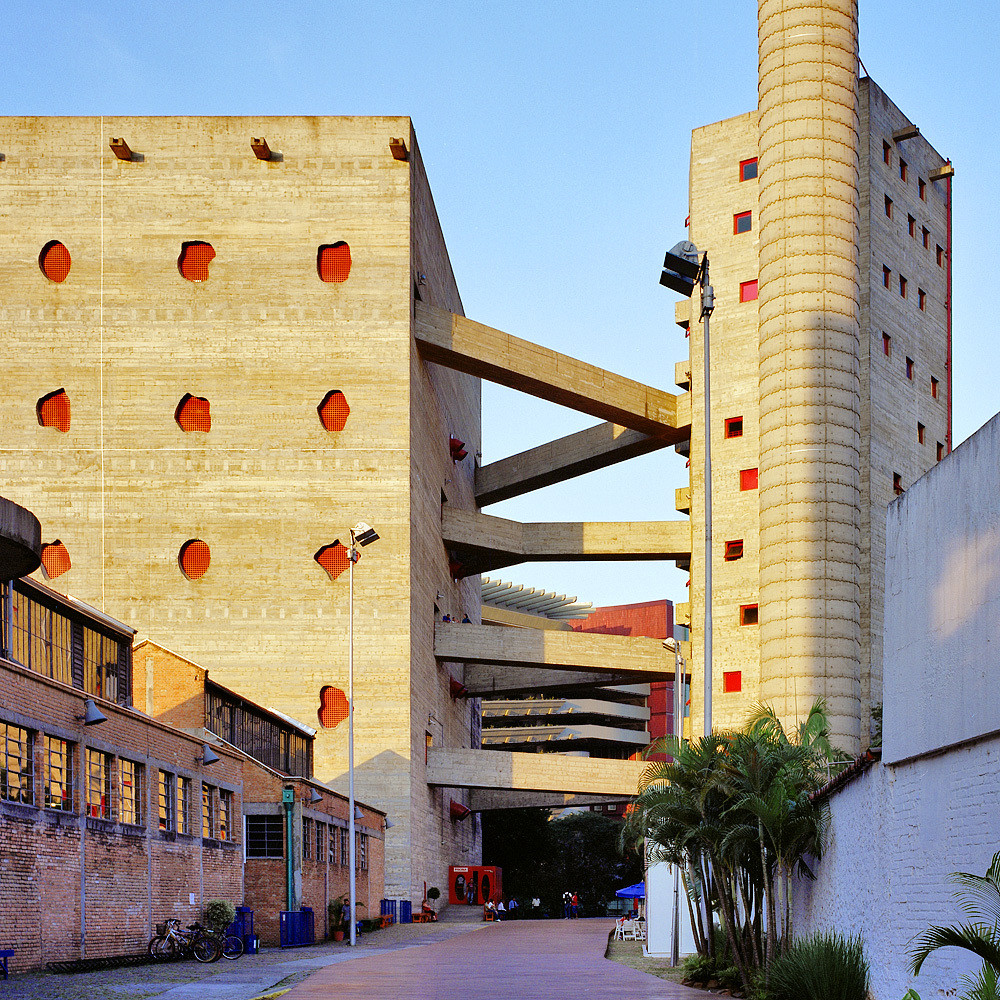
Embajada de Rusia en Cuba or Russian embassy in Cuba
This huge tower stands out in Havana's landscape and has become a symbol of the Soviet influence in Cuba. Construction began in 1978 and the building was completed in 1987, two years before the end of the USSR.
This huge tower stands out in Havana's landscape and has become a symbol of the Soviet influence in Cuba. Construction began in 1978 and the building was completed in 1987, two years before the end of the USSR.

A new building for the State of Mexico Boys and Girls Club (Club de Niños y Niñas del Estado de México) uses a brutalist style for a gentle purpose. 
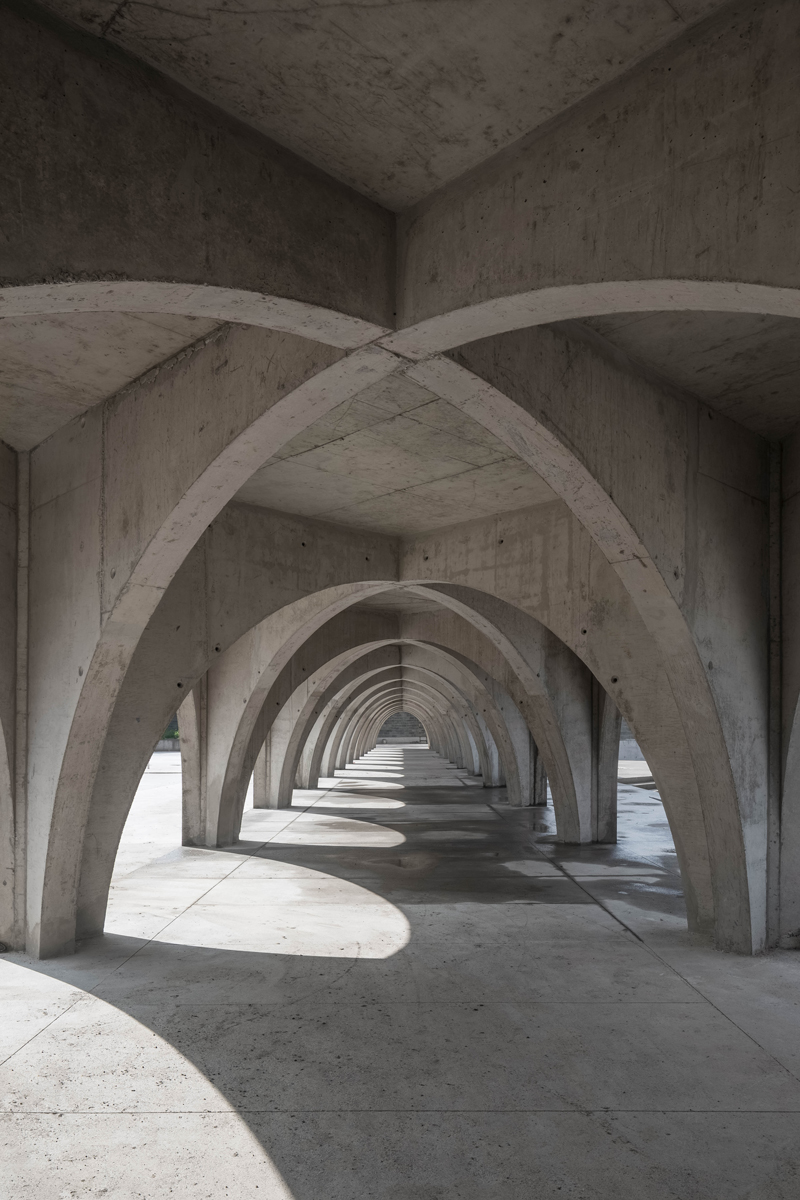
Agustín Hernández constructed his architectural office in Mexico City like a tree. Access to the building erected in the early 1970s is via a gangplank. 

St. Joseph Medical Center, Tacoma, Washington
Modernist Chicago architect Bertrand Goldberg experimented with unconventional forms using plywood and concrete, often creating ribbed columnar structures like his best-known work, Marina City.

Modernist Chicago architect Bertrand Goldberg experimented with unconventional forms using plywood and concrete, often creating ribbed columnar structures like his best-known work, Marina City.


Tuskegee University Chapel
After a fire engulfed an earlier church in 1957, Tuskegee University commissioned native Alabaman Paul Rudolph to design a new house of worship, working collaboratively with African American architects Louis Fry, John A. Welch, and Moreland G. Smith.
After a fire engulfed an earlier church in 1957, Tuskegee University commissioned native Alabaman Paul Rudolph to design a new house of worship, working collaboratively with African American architects Louis Fry, John A. Welch, and Moreland G. Smith.

Designed by Louis Kahn in 1965, the award-winning Phillips Exeter Library is composed of three massive, concentric squares, each housing a distinct sphere of activity: carrel space, the stacks, and an inner atrium.
The largest secondary school library in the world.

The largest secondary school library in the world.

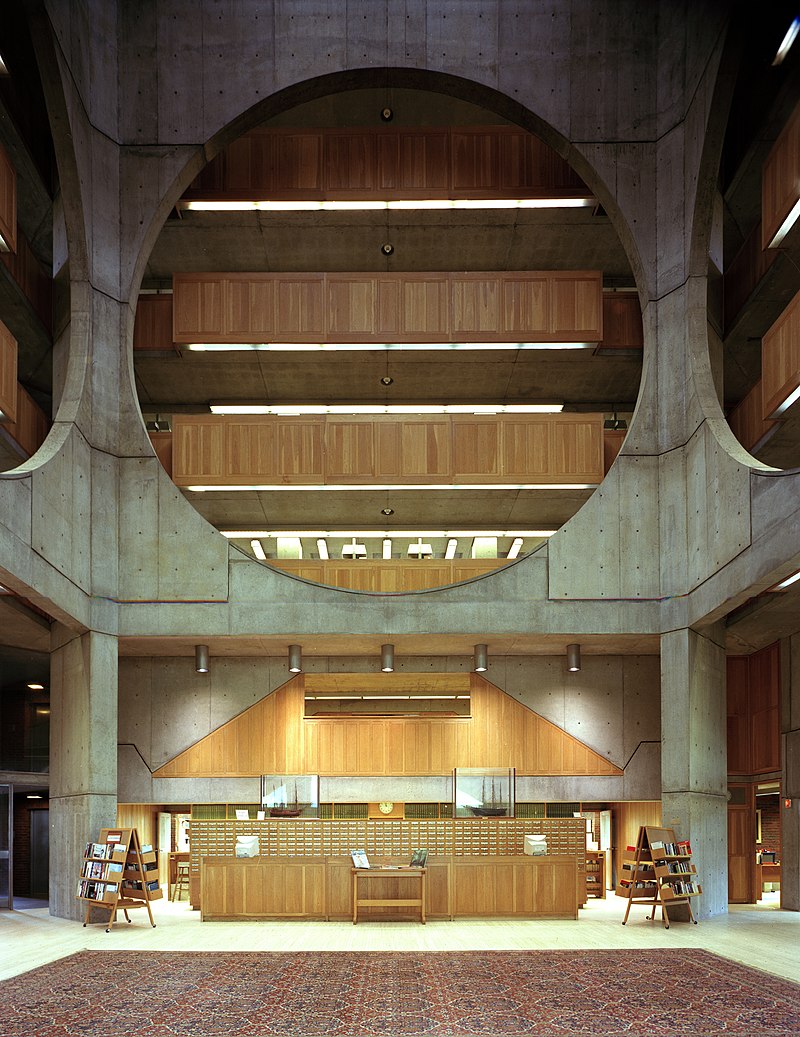
The Cadet Chapel, designed for the U.S. Air Force Academy by Walter Netsch, is one of the more graceful exponents of the Brutalist movement. Constructed in the early 1960s, the chapel boasts aluminum spires that recall the silhouette of a jet fighter. 

Geisel Library, UC San Diego: La Jolla, CA
Named for La Jolla native Theodore Geisel (better known as Dr. Seuss), Geisel Library first opened its doors to students in 1970.
This is some whimsical concrete and glass structure, evocative of an overgrown mushroom.
Named for La Jolla native Theodore Geisel (better known as Dr. Seuss), Geisel Library first opened its doors to students in 1970.
This is some whimsical concrete and glass structure, evocative of an overgrown mushroom.

After a fire destroyed Temple Beth Zion's original synagogue in 1961, architect Max Abramovitz was selected to design a new house of worship constructed from more sturdy materials, notably limestone and concrete. 

Rudolph Hall, Yale University
One of the earliest examples of Brutalism in the United States, Yale's Rudolph Hall was designed by Paul Rudolph. Completed in 1964, the multi-storey, concrete structure originally housed the university's architecture department.
One of the earliest examples of Brutalism in the United States, Yale's Rudolph Hall was designed by Paul Rudolph. Completed in 1964, the multi-storey, concrete structure originally housed the university's architecture department.

Dupont Circle Metro Station
Although every Metro station in Washington D.C. is an exponent of Brutalism, the Dupont Circle Station is particularly striking. In 2007, the station was voted as one of America's 150 favorite buildings (The American Institute of Architects)


Although every Metro station in Washington D.C. is an exponent of Brutalism, the Dupont Circle Station is particularly striking. In 2007, the station was voted as one of America's 150 favorite buildings (The American Institute of Architects)


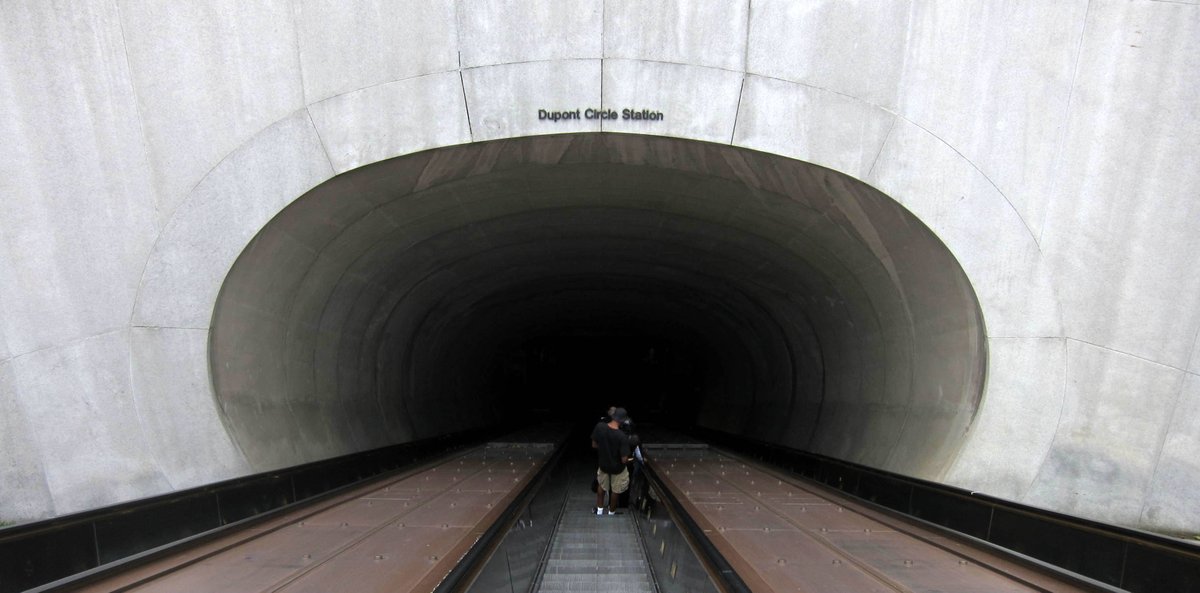
St. John's Abbey Church
In the late 1950s, a community of Benedictine monks in rural Minnesota selected up-and-coming architect Marcel Breuer to design a new house of worship.
In the late 1950s, a community of Benedictine monks in rural Minnesota selected up-and-coming architect Marcel Breuer to design a new house of worship.

The University of Pittsburgh boasts a number of impressive Brutalist structures, including Litchfield Towers, designed by Deeter & Ritchey. Constructed in the early '60s, the trio of cylindrical dorms were nicknamed “Ajax,” “Borax,” and “Clorox.” 

Armand Vaillancourt's Brutalist “Quebec Libre” fountain first graced San Francisco's Justin Herman Plaza in 1971. A striking example of public art, the sculpture is composed of over 100 distressed concrete blocks coalescing into a huge—yet surprisingly organic—composition. 
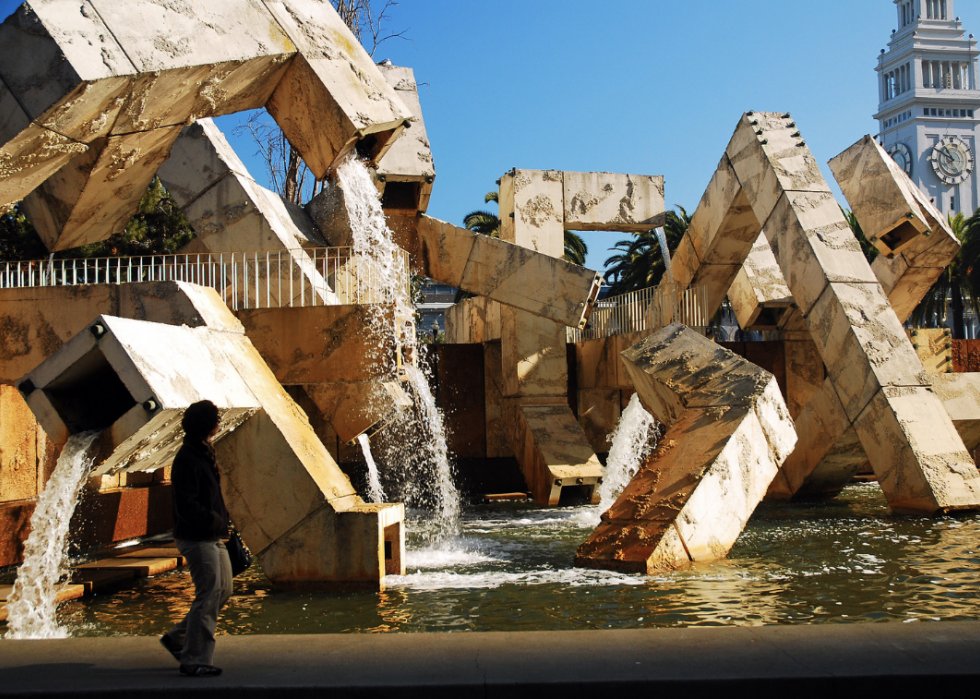
• • •
Missing some Tweet in this thread? You can try to
force a refresh

